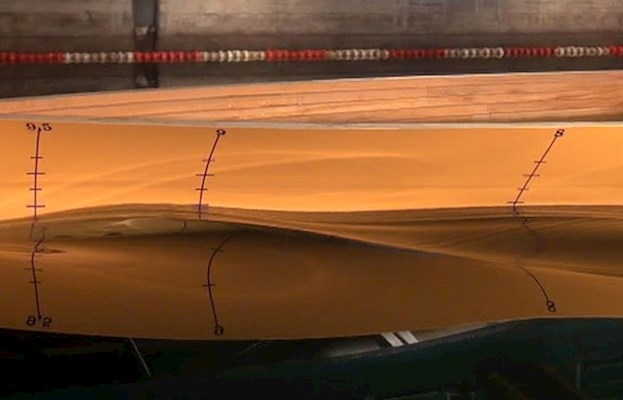EEDI verification
Ongoing technical development and innovation are key focus areas in the process of increasing the energy efficiency of ships. The Energy Efficiency Design Index is a means to support and push this development.
Background for the Energy Efficiency Design Index
Even though seaborne transportation is the most energy-efficient means of transportation, the total volume of transported goods is responsible for almost 3% of the total emission of CO2.
In order to lower CO2 emissions from shipping, the Marine Environmental Protection Committee (MEPC) under the International Maritime Organization (IMO) has recognized the need to develop an Energy Efficiency Design Index (EEDI) for new ships.
The purpose of the EEDI is to stimulate innovation and technical development of all elements affecting the energy efficiency of a ship from its design phase, thereby ensuring that new ships will be as energy-efficient as possible.
Calculating EEDI
The EEDI is a measure of a ship’s energy efficiency and is determined as follows:

The CO2 emission is computed from the fuel consumption taking into account the carbon content of the fuel. The fuel consumption is based on the power used for propulsion and auxiliary power measured at defined design conditions. The transport work is estimated as the designed ship capacity multiplied by the ship’s speed measured at the maximum summer load draught and at 75 per cent of the rated installed power.
IMO (MEPC) has developed a set of Industry Guidelines in order to provide details and examples of calculation of attained EEDI and to support the method and role of the verifier in charge of conducting the survey and certification of EEDI. These guidelines together with the EEDI calculation were adopted by MEPC at its 64th session.
Reach of EEDI
The calculation of EEDI and the following verification process is mandatory and applies to new ships of 400 gross tonnage and above as defined in Regulation 2.23 of MARPOL Annex VI. The calculation and verification of EEDI shall be performed for each:
- New ship before ship delivery
- Ship in service which has undergone a conversion that is so extensive that the ship is regarded by the Administration as a newly constructed ship.
The Industry Guidelines do not apply to ships with dieselelectric propulsion, turbine propulsion or hybrid propulsion systems.
The Industry Guidelines only apply to the following types of ships:
- Bulk carriers
- Gas carriers
- Tankers
- Container ships
- General cargo ships
- Refrigerated cargo carriers
- Combination carriers

Facility
Towing tanks

Article

